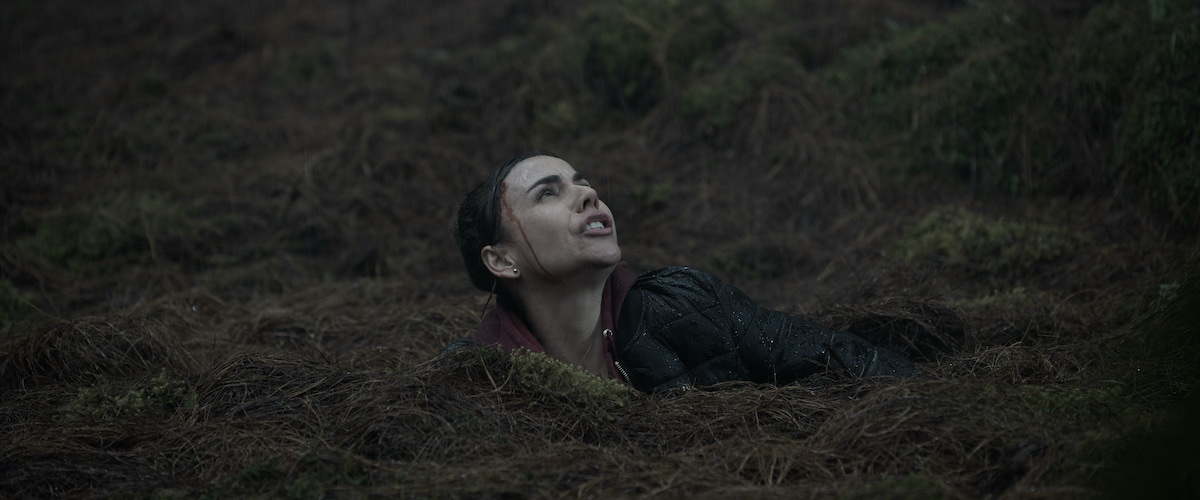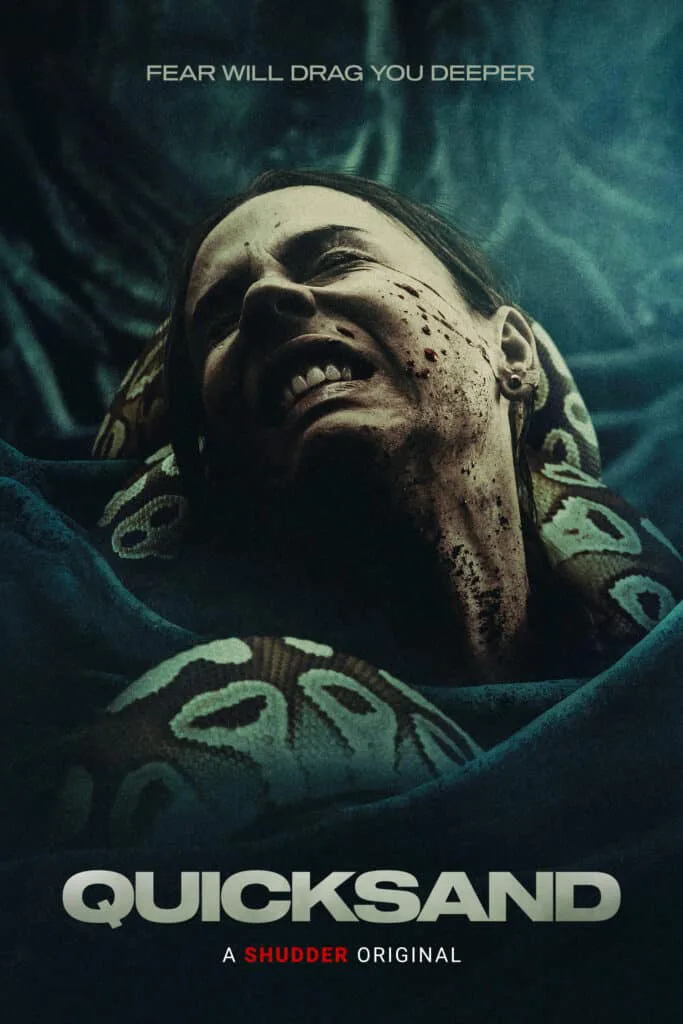Directed by Andres Beltran and written by Matt Pitts, “Quicksand” is the story of a couple on the brink of divorce who travel to South America. Healthcare professionals who work and live in the United States, the wife (played by Colombian actress Carolina Gaitán) is a doctor returning to her home country after many years away to deliver a lecture at a conference. The husband (played by Canadian actor Allan Hawco) is in Bogotá for the first time.
But before we see the couple, we are treated to a prologue of hunters in the rainforest meant to assure us this is a thriller and not a somber chamber piece, but it also spells out the problems with the film. The opening scene with the hunters relies on fast cutting to create a sense of terror that really feels disorienting. The score also tells us how to feel and doesn’t relent for the film’s 85-minute runtime. The hunter’s wailing fear fails to make an impact because we don’t know what he’s afraid of.
From there, we meet the couple who are the story’s focus. They have left their young children in the States, and we slowly realize their marriage has collapsed. The idea of a failing couple in peril far from home is intriguing—it makes one imagine a hybrid of Ingmar Bergman and “Deliverance.” But the script fails to give the actors what they need to make this couple credible. Their first scenes lack the kind of icy dread generated by a husband and wife in crisis and trying to pull away. The reasons for their marital trouble don’t need to be spelled out in a monologue; they need to feel concrete, and they don’t.
The couple decides to hike in the rainforest near Bogotá, where they immediately encounter a thief who has trailed them to the remote location. After a brief confrontation, the wife and husband find themselves in the titular liquefied soil, where they remain for two-thirds of the film. The husband tells us that, unlike ’70s television, actual quicksand doesn’t pull you under unless you flail, so they are merely stuck in the wilderness, waiting to fend off human and animal predators alike.
The idea of a pair in crisis being forced into mutual Samuel Beckett-like stasis with one another feels like a form of therapy that should have been invented by now. And, of course, the quicksand does begin to force the couple to look past their grievances and see the value in one another. The film plays with the idea that their reconciliation may be for naught with their lives in peril and tries to keep us in suspense until the credits roll. In other hands, and with greater faith in the audience, this film could have gone for a satisfying cinematic slow burn rather than resort to stylistic overkill. Coupled with a more layered and less cliched screenplay, “Quicksand” might have achieved something more gripping and emotionally moving.
But despite the actors’ best efforts, the film gets bogged down by trite writing and over-direction. Real quicksand may not drag its victims down, but “Quicksand” sinks beneath the weight of its missed opportunities.
On Shudder now.




















